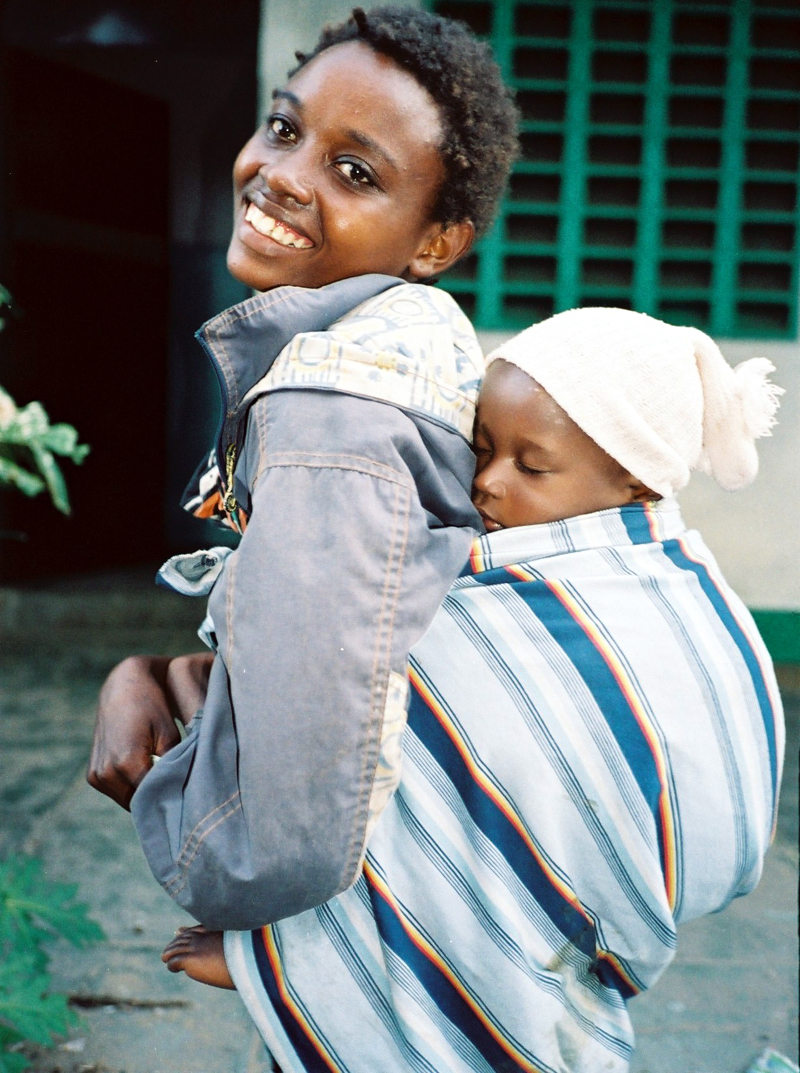Since ancient times, children were tightly wrapped in cloths, as it was believed that this would help their bodies grow straight. Sometimes, however, the wrapping was so tight that it caused deformities in the children’s limbs.
It was also convenient: you could lay your baby down securely and not have to worry about them. Older babies were also wrapped and placed at the side of the field where the mother was working, preventing them from moving and crawling away.
Swaddling was therefore also done for safety reasons, as children could not injure themselves. Little thought was given to the fact that the baby was lying in its own urine and feces, which could fester in hot weather. The cloths were not often changed at that time, and severe skin irritations were quite common.
The most famous example is Jesus, who, according to the Gospel of Luke, was placed in a manger wrapped in cloths.
For nomads from the Middle East and Asia, it was practical to carry babies in a bundle.
In the West, it was believed that a child would stay calm and grow evenly this way.
In the Middle Ages, swaddling was also practiced in our country because it was believed to protect against nasty diseases such as the plague and to help heal bruises sustained during birth.
Swaddling was thought to help, among other things, with crooked legs, hernias, and to ensure a perfectly straight posture and strong shoulders.
As a result of tightly swaddling infants, some physicians raised the alarm in the mid-18th century, noting that nowhere else did they see so many cripples and hunchbacks as in our country!
Research among Native American populations, where swaddling was traditionally practiced, showed that children there developed hip dysplasia more frequently.
This contrasts with countries where babies are traditionally carried in a sling on the mother’s hip, such as in Africa, where this condition is rarely seen.
By the end of the 18th century, swaddling had fallen out of favor among the upper classes.
Working-class families did not have this choice, as work needed to be done and swaddling ensured the child’s safety.
In the Dutch countryside, this practice remained common until the early twentieth century.
By the 1970s, swaddling was no longer used. It was discouraged by child health clinics due to possible hip problems, reduced motor development, and to promote healthy bonding between mother and child.
However, in the 1990s, swaddling was increasingly used again for motorically restless babies and colicky infants.
A community nurse would explain the basic principles, and parents could get started.
Source: Historia
22 august 2018









